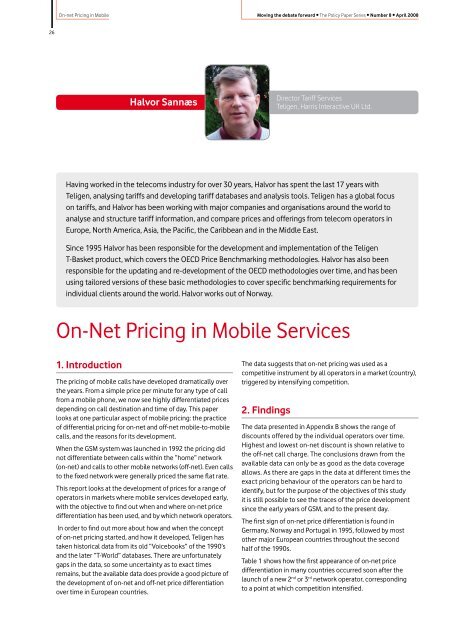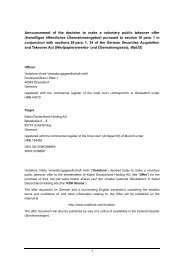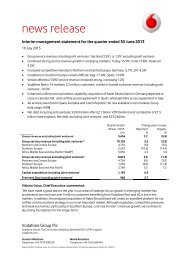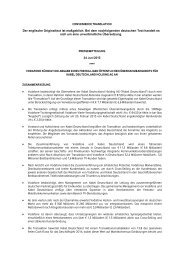You also want an ePaper? Increase the reach of your titles
YUMPU automatically turns print PDFs into web optimized ePapers that Google loves.
26<br />
On-net Pricing in Mobile Moving the debate forward • The Policy Paper Series • Number 8 • April 2008<br />
On-Net Pricing in Mobile Services<br />
1. Introduction<br />
Halvor Sannæs<br />
The pricing of mobile calls have developed dramatically over<br />
the years. From a simple price per minute for any type of call<br />
from a mobile phone, we now see highly differentiated prices<br />
depending on call destination and time of day. This paper<br />
looks at one particular aspect of mobile pricing: the practice<br />
of differential pricing for on-net and off-net mobile-to-mobile<br />
calls, and the reasons for its development.<br />
When the GSM system was launched in 1992 the pricing did<br />
not differentiate between calls within the “home” network<br />
(on-net) and calls to other mobile networks (off-net). Even calls<br />
to the fixed network were generally priced the same flat rate.<br />
This report looks at the development of prices for a range of<br />
operators in markets where mobile services developed early,<br />
with the objective to find out when and where on-net price<br />
differentiation has been used, and by which network operators.<br />
In order to find out more about how and when the concept<br />
of on-net pricing started, and how it developed, Teligen has<br />
taken historical data from its old “Voicebooks” of the 1990’s<br />
and the later “T-World” databases. There are unfortunately<br />
gaps in the data, so some uncertainty as to exact times<br />
remains, but the available data does provide a good picture of<br />
the development of on-net and off-net price differentiation<br />
over time in European countries.<br />
The data suggests that on-net pricing was used as a<br />
competitive instrument by all operators in a market (country),<br />
triggered by intensifying competition.<br />
2. Findings<br />
Director Tariff Services<br />
Teligen, Harris Interactive UK Ltd.<br />
Having worked in the telecoms industry for over 30 years, Halvor has spent the last 17 years with<br />
Teligen, analysing tariffs and developing tariff databases and analysis tools. Teligen has a global focus<br />
on tariffs, and Halvor has been working with major companies and organisations around the world to<br />
analyse and structure tariff information, and compare prices and offerings from telecom operators in<br />
Europe, North America, Asia, the Pacific, the Caribbean and in the Middle East.<br />
Since 1995 Halvor has been responsible for the development and implementation of the Teligen<br />
T-Basket product, which covers the OECD Price Benchmarking methodologies. Halvor has also been<br />
responsible for the updating and re-development of the OECD methodologies over time, and has been<br />
using tailored versions of these basic methodologies to cover specific benchmarking requirements for<br />
individual clients around the world. Halvor works out of Norway.<br />
The data presented in Appendix B shows the range of<br />
discounts offered by the individual operators over time.<br />
Highest and lowest on-net discount is shown relative to<br />
the off-net call charge. The conclusions drawn from the<br />
available data can only be as good as the data coverage<br />
allows. As there are gaps in the data at different times the<br />
exact pricing behaviour of the operators can be hard to<br />
identify, but for the purpose of the objectives of this study<br />
it is still possible to see the traces of the price development<br />
since the early years of GSM, and to the present day.<br />
The first sign of on-net price differentiation is found in<br />
Germany, Norway and Portugal in 1995, followed by most<br />
other major European countries throughout the second<br />
half of the 1990s.<br />
Table 1 shows how the first appearance of on-net price<br />
differentiation in many countries occurred soon after the<br />
launch of a new 2nd or 3rd network operator, corresponding<br />
to a point at which competition intensified.

















